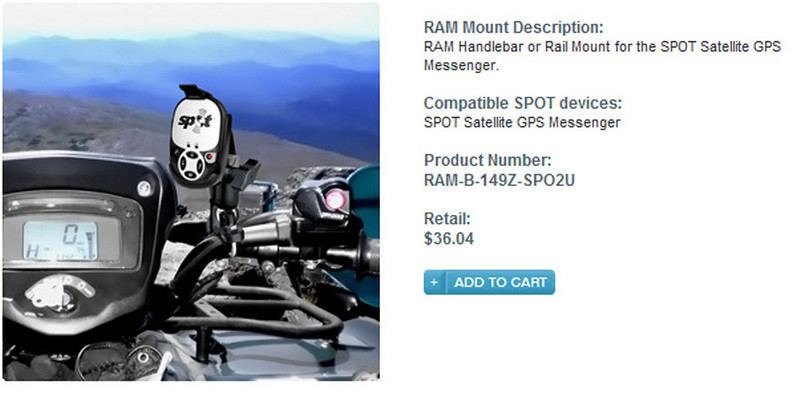What oil do I use? Wait, that's another thread....
Well, first of all, landing with guns, cell phones, SPOT devices or rocks in my pocket might not feel good to me. Some people ride with pieces of the Berlin Wall in their jacket and an uzi in their shorts, and report no ill effects after crashes. Congratulations. Whatever works for them. When I smacked the road in the mountains outside of Mascota, I had zilch in my pockets and still was sore for days. I didn't use 911 or help, just continued to use the tracking feature, which BTW worked flawlessly the whole trip in Mexico, before, then, and since.
But I see the main issue as this: there's the fact that your SPOT device, if on your person, isn't going to ping the satellite very well. In it's mount on the handlebar (at least, with my setup) it's facing flat to the sky, where it transmits best. Also, if it's in your pocket, it is harder if not impossible to check. When I'm pulled up to a stop, I usually cup my fingers around the indicator lights, to make sure SPOT is doing what I ask it to do. This all relates to the tracking function. If you're not into the tracking aspect of SPOT and you will only use it for emergencies, and don't care if it's on your person if you crash - have at it.
You can run through in your mind a hundred scenerios of what condition you'll be in after a crash. I suppose there are permutations of factors which might make it ideal to have it within reach, but as I work through my own expectations, desires, and needs, it works best for me where I've had it since day one. The punchline - ok, let's say you're alone, crash, break your legs, and can't crawl back to the bike. You reach into your pocket and activate your SPOT, and you're rescued. Winner! But if you're thrown from your bike and really wipe out and you're out cold or worse, it won't matter if you were wearing your SPOT around your neck, it's not going to activate on it's own.
Again, this is my own formula. I like constant satellite connectivity because the tracking feature requires it, and I'm wary of hard things in my jacket if I face plant. I'm not trying to convince anyone where to mount their SPOT, I'm just giving my experience and explaining what I do. You'd cringe at the stocks I invest in and would probably not like the NFL teams I do - to each his own. One poster on this subject posted on the logic of where he'd keep his SPOT - if he had one. Feh, if you have no experience with the thing and it's all speculation, then it's just cocktail conversation. If someone has a SPOT and has some experience with it, I'm not going to debate them about where they like to mount it or keep it. I want them to be happy, really.
Note: Having had SPOT I and now SPOT II, SPOT II wins, hands down. But that's another thread as well.





 Feel free to hang out and lurk as long as you like. However, we would like to encourage you to
Feel free to hang out and lurk as long as you like. However, we would like to encourage you to 

